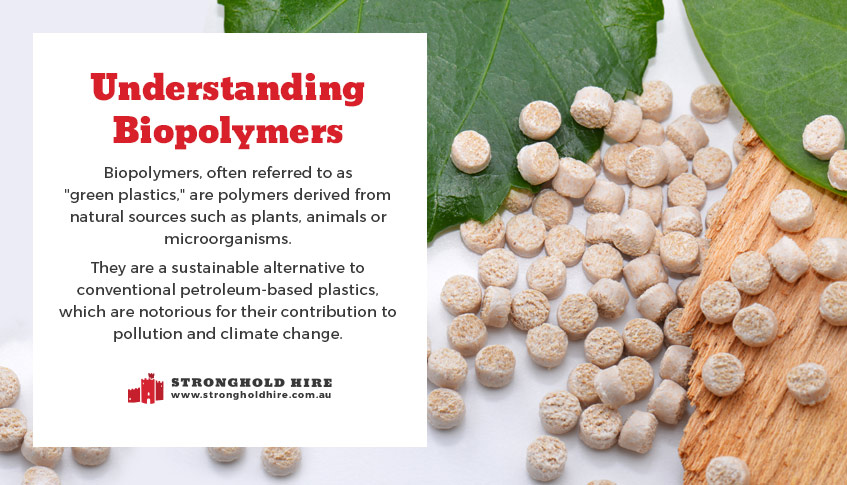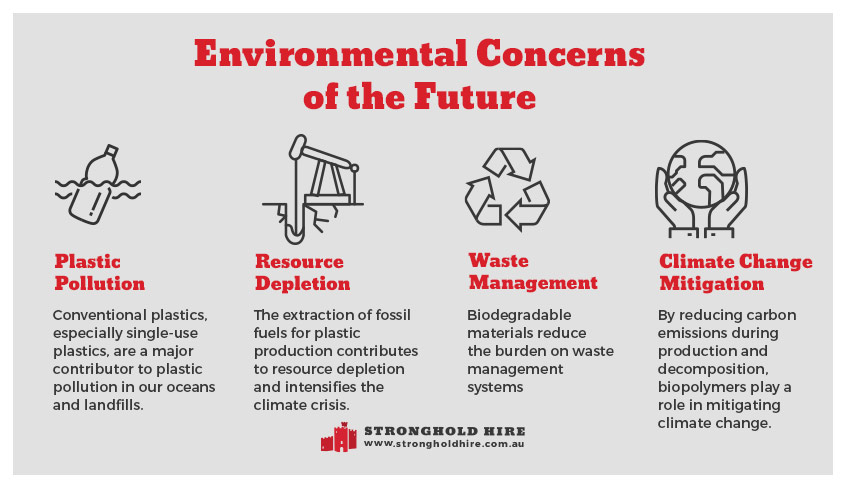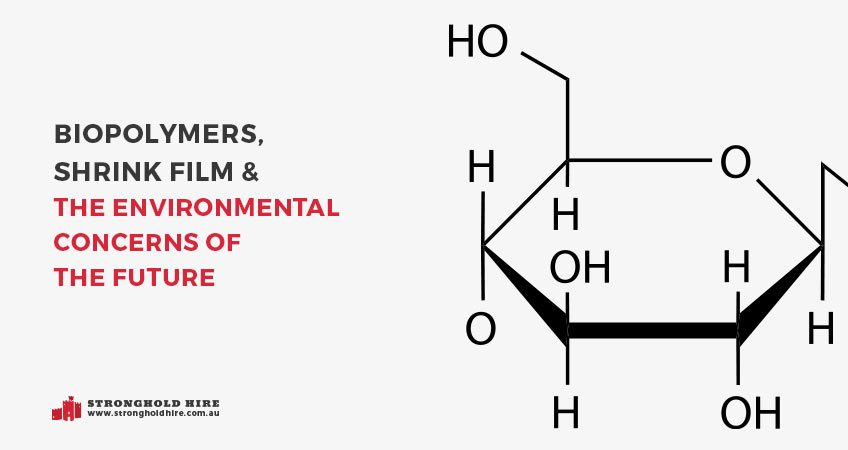Here at Stronghold Hire we are mindful of the materials that we use and the impact they may have on the environment. One of the biggest concerns of the modern world is the amount of plastic that is being discharged and making its way to the oceans. In this post we’ll discuss biopolymers, shrink wrap and the environmental concerns of the future.
Biopolymers – A Sustainable Alternative to Plastic
In an era where environmental concerns are becoming increasingly pressing, industries around the world are seeking sustainable alternatives to traditional materials. One such innovation is the use of biopolymers in the production of shrink films. Biopolymers, derived from renewable sources, offer a promising solution to mitigate the environmental impact of plastic packaging. In this blog, we will explore the concept of biopolymers, their application in shrink film production, and the environmental concerns that drive these innovations.

Understanding Biopolymers
Biopolymers, often referred to as “green plastics,” are polymers derived from natural sources such as plants, animals or microorganisms. They are a sustainable alternative to conventional petroleum-based plastics, which are notorious for their contribution to pollution and climate change. Biopolymers can be classified into three main categories:
- Polylactic Acid (PLA): PLA is derived from fermented plant starch (usually corn) and is one of the most common biopolymers. It’s used in various applications, including packaging, disposable cutlery, and textiles.
- Polyhydroxyalkanoates (PHAs): PHAs are produced by microorganisms through the fermentation of sugar or lipids. They are biodegradable and can be used in packaging, medical devices, and agriculture.
- Starch-Based Biopolymers: These are made from renewable starch sources such as potatoes, wheat, and cassava. They are used in food packaging and agricultural applications.
The Role of Biopolymers in Shrink Films
Shrink films are widely used for packaging products in various industries, including food, beverages, and consumer goods. Traditionally, these films were made from non-biodegradable, petroleum-based plastics like polyethylene. However, the environmental impact of such materials has prompted a shift toward biopolymer-based shrink films.
Here’s how biopolymers are making a difference in shrink film production:
- Biodegradability: Biopolymer-based shrink films are biodegradable, meaning they can break down naturally into harmless substances over time. This is in stark contrast to conventional plastics that can persist in the environment for hundreds of years.
- Renewable Resources: Biopolymers are sourced from renewable resources like cornstarch and sugarcane, reducing our reliance on fossil fuels.
- Lower Carbon Footprint: The production of biopolymers generally results in lower greenhouse gas emissions compared to traditional plastics. This aligns with global efforts to combat climate change.
- Recyclability: Some biopolymers, like PLA, are recyclable, further reducing their environmental impact.

Environmental Concerns of the Future
As the global population continues to grow and environmental concerns escalate, the adoption of sustainable materials like biopolymers becomes paramount. Here are some pressing environmental concerns that these innovations address:
- Plastic Pollution: Conventional plastics, especially single-use plastics, are a major contributor to plastic pollution in our oceans and landfills. Biodegradable biopolymers offer a solution to this problem.
- Resource Depletion: The extraction of fossil fuels for plastic production contributes to resource depletion and intensifies the climate crisis. Biopolymers, derived from renewable sources, help alleviate this pressure.
- Waste Management: Biodegradable materials reduce the burden on waste management systems and landfills, which are struggling to cope with non-biodegradable plastics.
- Climate Change Mitigation: By reducing carbon emissions during production and decomposition, biopolymers play a role in mitigating climate change.

Biopolymer For Sustainable Packing & Shrink Wrap Solutions
Biopolymers are at the forefront of sustainable packaging solutions, and their application in shrink film production is a promising step toward a greener future. As consumers become more conscious of their environmental footprint, industries must adapt to meet these demands. The use of biopolymers not only addresses the immediate issue of plastic pollution but also aligns with broader goals of resource conservation, waste reduction, and climate change mitigation. To secure a sustainable future, it is crucial for businesses and individuals alike to embrace these innovative materials and practices. To learn more about our shrink wrap solutions then give us a call now on 02 89852020 or contact us online.

